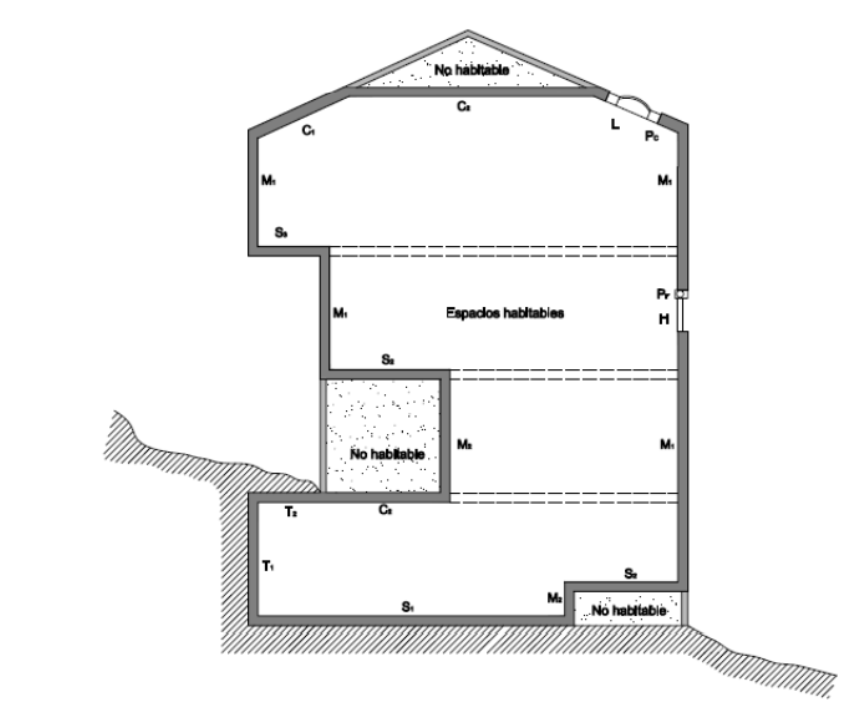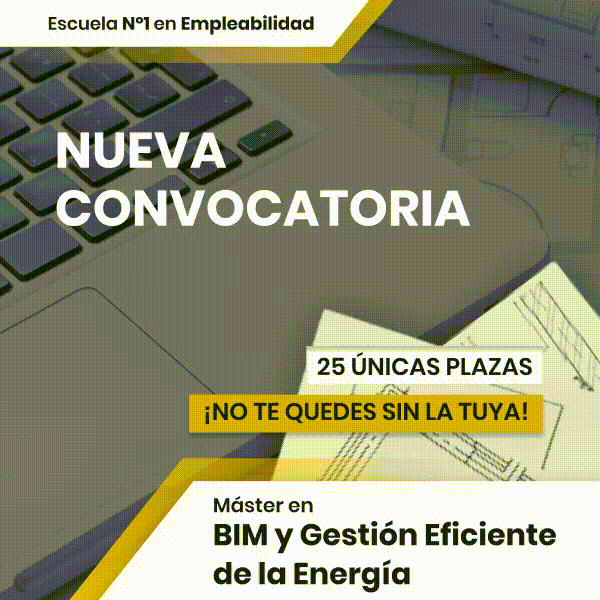The interior spaces of an energy-certifiable building (article 3 of RD 390/2021) are divided into habitable and non-habitable spaces based on the following properties:

Living space: Space formed by one or several contiguous habitable areas with the same use and equivalent thermal conditions grouped together for the purposes of calculating energy demand.
Depending on their density of internal sources (amount of heat dissipated inside), living spaces are classified into living spaces with very high, high, medium or low internal load:
1. Low internal load (living) space: Living space where little heat is dissipated. It includes spaces intended mainly for residing in them, on a temporary or permanent basis.
This category includes all spaces in residential buildings and those areas or spaces of buildings similar in use and size, such as hotel rooms, hospital rooms and living rooms, as well as their related circulation areas. Corresponds to a density of internal sources less than 6 W/m2.
2. Medium internal load (living) space: Living space where an amount of heat is generated, intermediate between the spaces defined with high and low internal load. Corresponds to a density of internal sources between 6 W/m2 and 9 W/m2. For example, a bank office.
3. High internal load (living) space: Living space where a large amount of heat is generated due to its occupation, lighting or existing equipment. Corresponds to spaces with a density of internal sources between 9 W/m2 and 12 W/m2. For example, a supermarket.
4. Very high internal load (living) space: Living space where a large amount of heat is generated due to its occupation, lighting or existing equipment. Corresponds to spaces with a density of internal sources greater than 12 W/m2. For example, the main room of an auditorium. Also in brightly lit spaces such as offices or commercial areas.
Depending on the availability of heating and/or cooling systems, living spaces are classified as conditioned or unconditioned:
1. Conditioned (living) space: living space that will have a heating and/or cooling system. In private residential use, all living spaces are considered conditioned. Therefore, a toilet that without any type of heating or cooling in a home is considered habitable conditioned.
For example, rooms and rooms in residential buildings (bedrooms, dining rooms, libraries, living rooms, etc.) are conditioned habitable areas; classrooms, libraries and offices in teaching buildings; Common circulation areas inside buildings such as hallways; Kitchens, bathrooms, toilets, hallways and distributors in any building; Common circulation areas inside buildings such as hallways; Any other use similar to the previous ones.
2. Unconditioned (living) space: Living space that will not have a heating and/or cooling system. Being a habitable space, however, it has internal sources (lighting, occupancy and equipment). It applies to uses other than private residential, since in this case all living spaces are considered conditioned. For example, an office.
Non-habitable space: It is a space formed by one or several contiguous non-habitable areas with the same use and equivalent thermal conditions grouped together for the purposes of calculating energy demand. Since it is not a habitable space, the existence of internal sources (lighting, occupancy and equipment) is not considered.
For example, garages, storage rooms, technical chambers, unconditioned attics and their common areas, as well as any other use comparable to the above, are non-habitable areas.




































